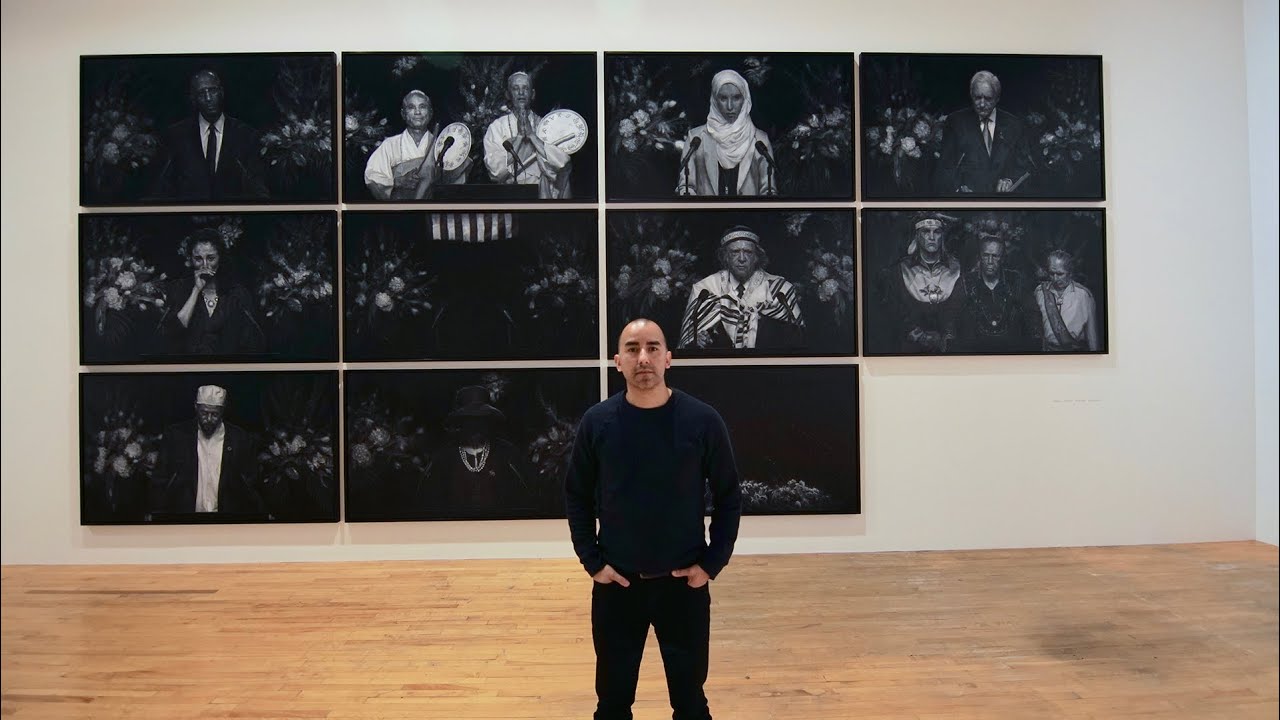How public memorials help us heal | Olivia Rothstein Keeffe | TEDxUGA
Summary
TLDRIn this compelling talk, the speaker explores the significance of memorials in shaping collective memory and addressing grief. They highlight the transformative impact of the Vietnam Veterans Memorial and its role in acknowledging loss and fostering resilience. Drawing on Dr. Pauline Boss's concept of 'ambiguous loss,' the speaker emphasizes that modern memorials should be accessible, flexible, and relatable to resonate with diverse audiences. Encouraging creativity in commemoration, they invite individuals to identify personal losses and create meaningful memorials, ultimately promoting healing and ensuring that collective memories endure for future generations.
Takeaways
- 😀 Collective memory is formed through shared experiences, like the five seconds of stillness, demonstrating how personal perceptions of time can create a communal understanding.
- 🕊️ Memorials serve as physical representations of grief, allowing communities to honor those lost and providing a sense of permanence.
- 🏛️ The design of memorials reflects more about the creators and their society than about the individuals they commemorate, as noted by architectural historian Dell Upton.
- 💔 The Vietnam Veterans Memorial revolutionized commemoration practices in America, shifting societal attitudes toward veterans and addressing historical grievances.
- 🪦 Mya Lin's design of the Vietnam Veterans Memorial emphasizes absence and invites visitors to reflect on their own connections to loss.
- 🧠 The concept of ambiguous loss, introduced by Dr. Pauline Boss, describes a type of grief without clear resolution, such as loss due to war or the COVID-19 pandemic.
- 📅 Grief is not linear, and memorials should be flexible to reflect the evolving nature of collective memory and community resilience.
- 🏞️ Accessibility is crucial in memorial design; mobile memorials can reach wider audiences and facilitate healing for those unable to visit traditional sites.
- 🤝 Future memorials should be relatable, connecting with individuals regardless of their direct ties to historical events, fostering empathy and understanding.
- 🖊️ Individuals are encouraged to create personal memorials for their ambiguous losses, promoting resilience and collective healing through creative expression.
Q & A
What is the primary purpose of memorials as discussed in the script?
-Memorials serve to freeze moments in time and provide a tangible representation of collective memories, allowing communities to honor those they have lost and address grief.
How does the speaker relate their personal experiences to the topic of memorials?
-The speaker connects their experiences, particularly witnessing their father's grief and the impact of the COVID-19 pandemic, to the broader theme of ambiguous loss and the need for accessible memorials.
What is ambiguous loss, according to Dr. Pauline Boss?
-Ambiguous loss is a type of loss that lacks clear resolution, where absence and presence coexist, creating a void that is difficult to fill. It can manifest in various situations, such as missing persons or complex grief.
How did the Vietnam Veterans Memorial change public attitudes towards veterans?
-The Vietnam Veterans Memorial shifted public perception by forcing Americans to confront the realities of the Vietnam War, fostering understanding and compassion for returning veterans rather than scorn.
What three elements must future memorials incorporate, as mentioned by the speaker?
-Future memorials should incorporate accessibility, flexibility, and relatability to effectively address collective grief and connect with diverse audiences.
Why does the speaker emphasize accessibility in memorial design?
-Accessibility is crucial because intense collective loss requires spaces where people can honor and process their grief. The speaker cites the Wall That Heals as an example of a mobile memorial that brings the experience to communities.
What role does flexibility play in the design of memorials?
-Flexibility is important because grief and collective memory evolve over time. Memorials should be able to change and adapt to reflect ongoing experiences and emotions associated with loss.
How can memorials be relatable to future generations?
-Memorials must connect not only to the events they commemorate but also to universal themes of loss and resilience, allowing future generations to empathize and understand the significance of the memorial.
What alternative forms of memorialization does the speaker suggest?
-The speaker suggests that memorials do not have to be physical structures; they can include songs, poems, websites, and other creative expressions that resonate with individuals and communities.
What challenge does the speaker present to the audience at the end of the talk?
-The speaker challenges the audience to identify and commemorate their own ambiguous losses through personal acts of creation, fostering resilience and contributing to collective memory.
Outlines

هذا القسم متوفر فقط للمشتركين. يرجى الترقية للوصول إلى هذه الميزة.
قم بالترقية الآنMindmap

هذا القسم متوفر فقط للمشتركين. يرجى الترقية للوصول إلى هذه الميزة.
قم بالترقية الآنKeywords

هذا القسم متوفر فقط للمشتركين. يرجى الترقية للوصول إلى هذه الميزة.
قم بالترقية الآنHighlights

هذا القسم متوفر فقط للمشتركين. يرجى الترقية للوصول إلى هذه الميزة.
قم بالترقية الآنTranscripts

هذا القسم متوفر فقط للمشتركين. يرجى الترقية للوصول إلى هذه الميزة.
قم بالترقية الآنتصفح المزيد من مقاطع الفيديو ذات الصلة

The Genius Design of Communist Memorials

Peter Doolittle: How your "working memory" makes sense of the world

【思想をRethinkせよ】宮台真司と波頭亮が、日本の未来を見つめ直す。

Vincent Valdez: The Beginning is Near | In The Making | American Masters | PBS

Can the stressbusting power of everyday ritual increase your wellbeing? | Cris Clucas | TEDxCanberra

Full speech: Michelle Obama speaks at 2024 DNC | USA TODAY
5.0 / 5 (0 votes)
